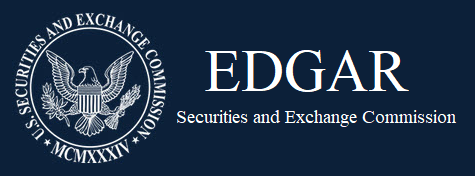EDGAR stands for Electronic Data Gathering, Analysis, and Retrieval. It is an online database maintained by the U.S. Securities and Exchange Commission (SEC). It is a comprehensive repository that contains a wide range of financial and business documents submitted by publicly traded companies, mutual funds, and other entities required by law to file with the SEC.
Some of the key types of documents you can find on EDGAR include:
- Annual Reports (Form 10-K): These provide detailed information about a company’s financial performance, management, and risks.
- Quarterly Reports (Form 10-Q): These offer updates on a company’s financial performance and typically include unaudited financial statements.
- Proxy Statements (Form DEF 14A): These include information about corporate governance, executive compensation, and voting matters for shareholders.
- Registration Statements (Form S-1, S-3, etc.): These documents are filed when a company is going public or issuing new securities.
- Insider Trading Reports (Form 3, 4, and 5): These disclose transactions in a company’s stock made by insiders, such as officers, directors, and large shareholders.
- Mergers and Acquisitions (Form 8-K): These reports are filed when significant corporate events occur, such as mergers, acquisitions, or changes in control.
- Other Disclosures: EDGAR also contains a variety of other documents related to regulatory compliance, including disclosures about environmental issues, legal proceedings, and more.
EDGAR provides public access to these documents through its online search and retrieval system, making it a valuable resource for investors, analysts, researchers, and anyone interested in the financial activities and disclosures of publicly-traded companies in the United States. It helps promote transparency and ensures that investors have access to timely and relevant information about the companies in which they invest.
What is EDGAR?
EDGAR is the primary system for companies and others submitting documents under the Securities Act of 1933, the Securities Exchange Act of 1934, the Trust Indenture Act of 1939, and the Investment Company Act of 1940.
Containing millions of company and individual filings, EDGAR benefits investors, corporations, and the U.S. economy overall by increasing the efficiency, transparency, and fairness of the securities markets. The system processes about 3,000 filings per day, serves up 3,000 terabytes of data to the public annually, and accommodates 40,000 new filers per year on average.
Learn about the history of EDGAR.
EDGAR® and EDGARLink® are registered trademarks of the SEC.
Who has access to EDGAR’s information?
Access to EDGAR’s public database is free—allowing you to research, for example, a public company’s financial information and operations by reviewing the filings the company makes with the SEC. You can also research information provided by mutual funds (including money market funds), exchange-traded funds (ETFs), variable annuities, and individuals.
The Office of Investor Education and Advocacy has created a helpful guide to Using EDGAR to Research Investments.
What resources are available to help companies file in EDGAR?
EDGAR provides a wealth of resources to help filers, including:
- How to apply for EDGAR access;
- Website support for EDGAR filers; and
- Telephone support for EDGAR filers.
Who administers EDGAR?
The SEC’s EDGAR Business Office (EBO) is the business owner of EDGAR. The office’s responsibilities include:
- Governance and administration of EDGAR;
- Strategic planning for EDGAR;
- EDGAR filer support; and
- Support for SEC staff with rulemaking and other development in EDGAR
Using EDGAR to Research Investments
The EDGAR database provides free public access to corporate information, allowing you to research a public company’s financial information and operations by reviewing the filings the company makes with the SEC. You can also research information provided by mutual funds (including money market funds), exchange-traded funds (ETFs), and variable annuities.
For more information, please visit the SEC’s website.
* * *
